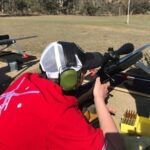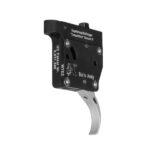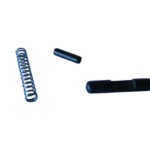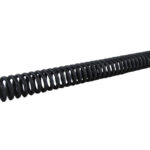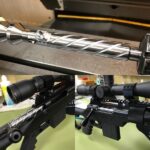Please check the following as in our experience misfiring issues can more often than not be related to these issues:
- Primers not seated firmly against the anvil of the cartridge case.
- Incorrect head spacing on the barrel.
- Excessive grease inside the bolt slowing the firing pin drop.
Once you have confidently ruled out the above we suggest the below options:
- Speak to a dealer for supply of un-assembled parts which they can alter and assemble to the specs they prefer. For example we have always used .050” to .055” protrusion length for the firing pin tip, some of our dealers have always preferred .060” protrusion.
- The internal slotted bolt sleeve that is held in by the bolt cap can have a slotted spacer added to suit, this will increase the preload on the striker spring. The sleeve can also be cut back to decrease preload on striker spring.
- It is also not very difficult to insert a piece between the existing spacer and spring located after the cocking piece in the striker system. Be sure not to bind the spring with too large a spacer. The firing pin is held together with Loctite so you would need to use a moderate heat to unset the Loctite in the cocking piece at the rear of the striker system. Note Moderate heat. You will also see a grub screw located tin the cocking piece this helps hold it in place. Record the length between the front flat of the firing pin tip and the rear of the cocking piece sear. Go back to the original size after you fit the extra spacer. For details see firing pin disassembly.
Please Note: we strongly suggest you have a gunsmith or person of necessary skills to perform these modifications, also check that your trigger still holds safely as the extra spring pressure can sometimes cause the trigger to misfire.



